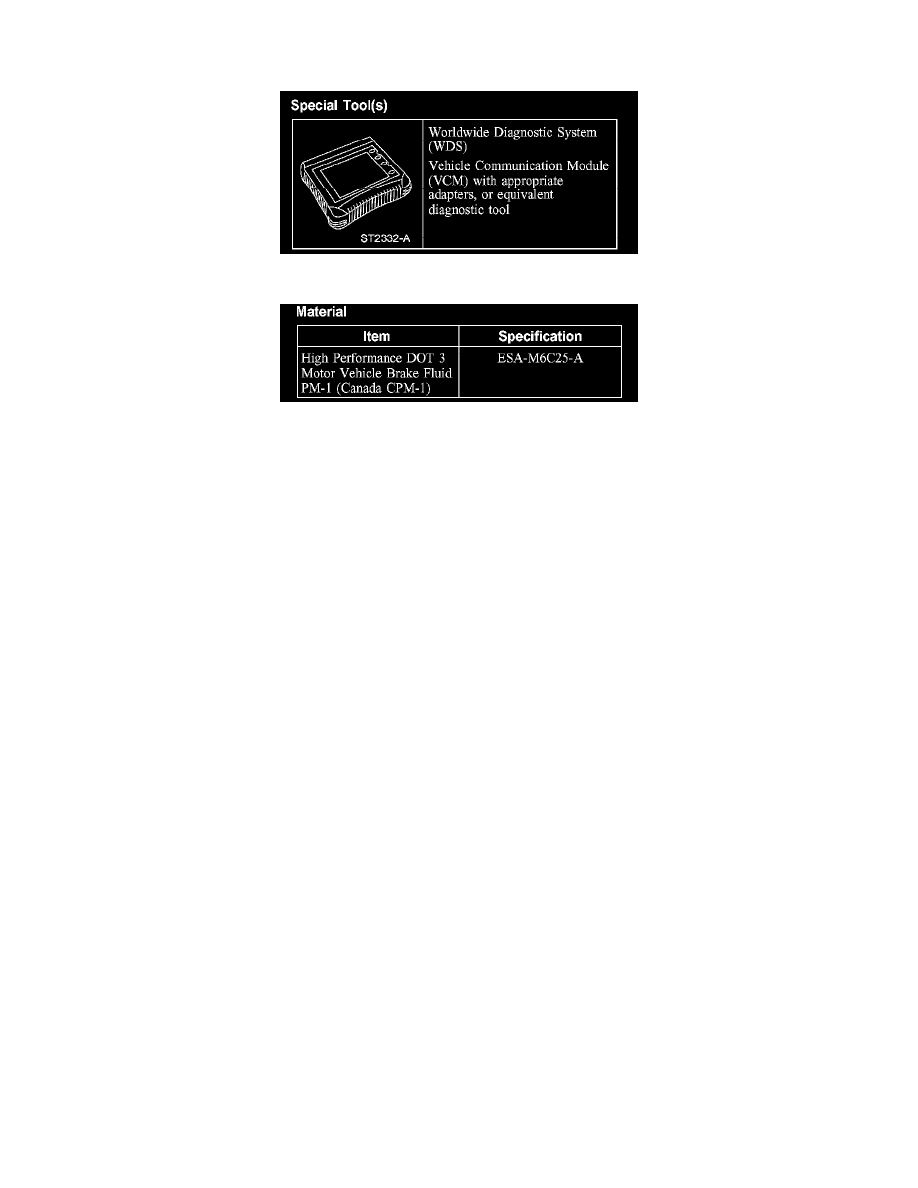Mark LT 4WD V8-5.4L VIN 5 (2006)

Brake Bleeding: Service and Repair
Brake System Bleeding
Special Tool(s)
Material
Master Cylinder, Bench
WARNING: Use of any other than approved DOT 3 motor vehicle brake fluid will cause permanent damage to brake components and will
render the brakes inoperative. Failure to follow these instructions may result in personal injury.
WARNING: Brake fluid contains polyglycol ethers and polyglycols. Avoid contact with eyes. Wash hands thoroughly after handling. If
brake fluid contacts eyes, flush eyes with running water for 15 minutes. Get medical attention if irritation persists. If taken internally, drink
water and induce vomiting. Get medical attention immediately. Failure to follow these instructions may result in personal injury.
CAUTION: Brake fluid is harmful to painted and plastic surfaces. If brake fluid is spilled onto a painted or plastic surface, immediately wash it with
water.
CAUTION: Do not allow the brake master cylinder reservoir to run dry during the bleeding operation. Keep the brake master cylinder reservoir filled
with the specified brake fluid. Never reuse the brake fluid that has been drained from the hydraulic system.
NOTE: When any part of the hydraulic system has been disconnected for repair or new installation, air may get into the system and cause spongy
brake pedal action. This requires bleeding of the hydraulic system after it has been correctly connected. The hydraulic system can be gravity bled,
manually bled or bled with pressure bleeding equipment.
1. Support the brake master cylinder body in a vise and fill the brake master cylinder reservoir with specified brake fluid.
2. NOTE: Original equipment lines are not intended to be used during this procedure.
Install short brake tubes with the ends submerged in the brake master cylinder reservoir.
3. Slowly press the primary piston until clear fluid flows from both brake tubes, without air bubbles.
4. Remove the short brake tubes and plug the brake tube ports.
Master Cylinder - In Vehicle
WARNING: Use of any other than approved DOT 3 motor vehicle brake fluid will cause permanent damage to brake components and will
render the brakes inoperative. Failure to follow these instructions may result in personal injury.
WARNING: Brake fluid contains polyglycol ethers and polyglycols. Avoid contact with eyes. Wash hands thoroughly after handling. If
brake fluid contacts eyes, flush eyes with running water for 15 minutes. Get medical attention if irritation persists. If taken internally, drink
water and induce vomiting. Get medical attention immediately. Failure to follow these instructions may result in personal injury.
CAUTION: Brake fluid is harmful to painted and plastic surfaces. If brake fluid is spilled onto a painted or plastic surface, immediately wash it with
water.
CAUTION: Do not allow the brake master cylinder reservoir to run dry during the bleeding operation. Keep the brake master cylinder reservoir filled
with the specified brake fluid. Never reuse the brake fluid that has been drained from the hydraulic system.
